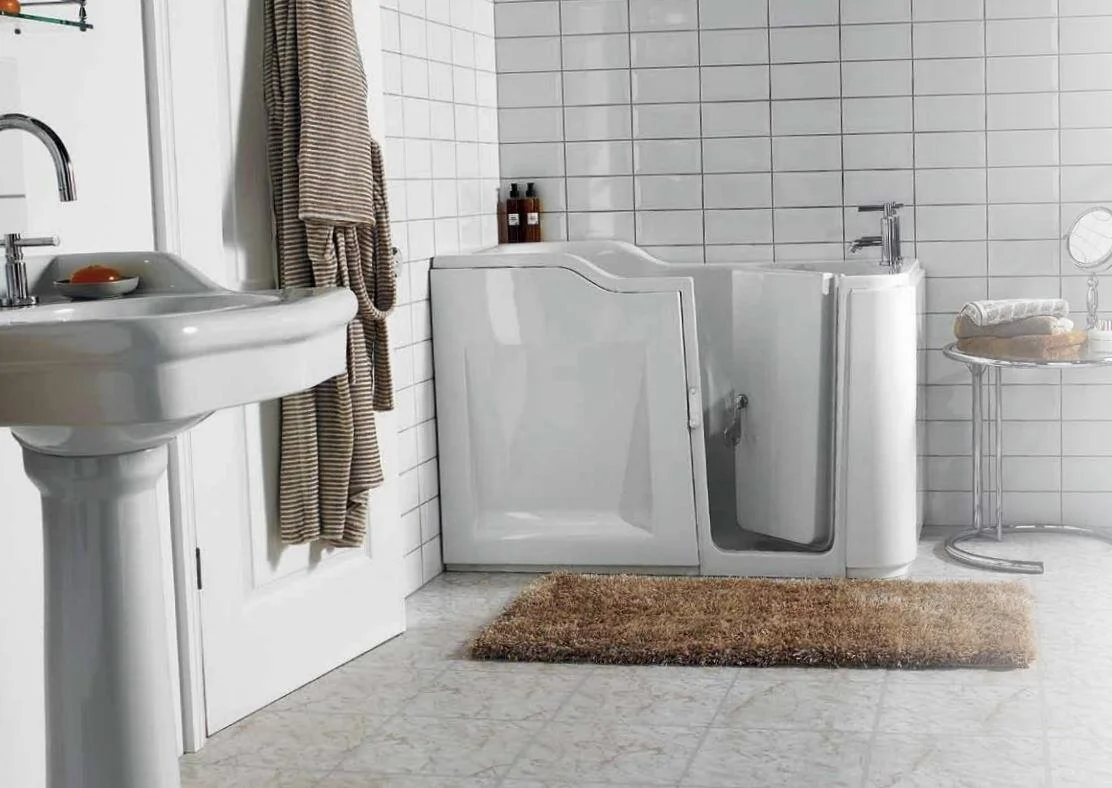This post contains affiliate links, which means I may earn a small commission at no cost to you if you make a purchase through my link. Information provided for educational purposes only. Please consult experts and professionals before taking action on the below.
Consider sponsoring this post to help us share this knowledge with others!
In recent years, walk-in baths have gained popularity as a practical and stylish solution for individuals seeking enhanced safety and comfort in their bathrooms. This trend is not just about aesthetics, mind you – it’s also a reflection of a growing awareness of the importance of accessibility and wellness in home design!
So, are you thinking of investing in a walk-in bath but aren’t quite sure what to expect from one? Let’s explore everything you need to know about walk-in baths and why they’re becoming a prominent choice in modern homes.
Understanding walk-in baths
Walk in baths are specially designed unique tubs with a sealed, watertight door that allows users to enter and exit without stepping over a high rim. These baths are equipped with safety features, including built-in handrails and non-slip surfaces, making them an ideal choice for individuals with mobility challenges or those who simply prioritize safety and convenience.
Accessibility and aging in place
One of the primary reasons behind the popularity of walk-in baths is the worldwide aging population. As more people choose to age in place, the demand for accessible and user-friendly home features has increased. Walk-in baths provide a practical solution, offering a comfortable bathing experience without compromising safety. They eliminate the need to navigate a high tub wall, reducing the risk of slips and falls.
Hydrotherapy benefits
Beyond safety concerns, walk-in baths often come equipped with hydrotherapy features. Hydrotherapy involves using jets of water to provide therapeutic benefits such as improved circulation, pain relief, and relaxation. These features have contributed to the appeal of walk-in baths, transforming them into more than just a functional bathroom fixture but also a wellness investment.
Versatility in design
Contrary to the misconception that accessible design compromises aesthetics, walk-in baths are available in a variety of styles and designs. Manufacturers have recognized the importance of blending functionality with beauty, offering options that cater to different tastes and preferences. Whether you prefer a sleek, modern design or a more traditional look, there’s likely a walk-in bath that suits your aesthetic vision.
Installation considerations
Installing a walk-in bath requires careful planning, as it involves more than simply replacing a traditional tub. The process may include adjusting plumbing, ensuring proper drainage, and modifying the new fixture. While professional installation is recommended, the long-term benefits in terms of safety and convenience often outweigh the initial investment and effort.
Cost and return on investment
The cost of a walk-in bath can vary depending on factors such as features, brand, and installation requirements. While it may represent a significant upfront expense, the potential return on investment is substantial, especially for those looking to enhance the accessibility of their homes. The added safety and convenience contribute to the overall value of the property.
Environmental considerations
In the era of sustainable living, home design increasingly prioritises eco-friendly features. Some walk-in baths are designed with environmental consciousness in mind, incorporating energy-efficient components and materials. When exploring your options, consider models that align with your commitment to reducing your ecological footprint.
The trend of walk-in baths is a testament to the evolving priorities in home design, emphasizing accessibility, safety, and wellness. Whether you’re planning for the future, accommodating a family member’s needs, or simply seeking a more comfortable bathing experience, a walk-in bath might just be the transformative addition your bathroom needs.

Leave a Reply